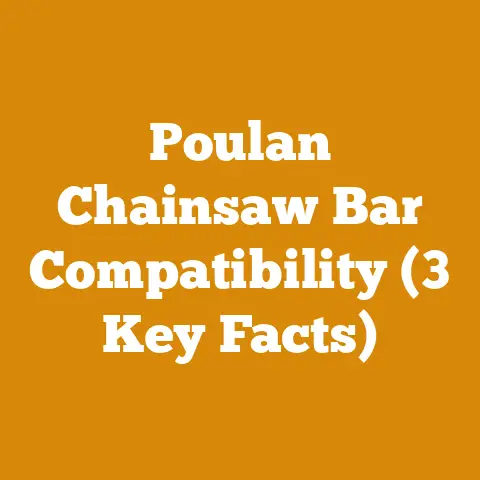Cost of Removing Trees (5 Factors to Consider)
Have you ever looked at a towering tree in your backyard and wondered how much it might cost to have it removed? It’s not as simple as just chopping it down. Understanding the various factors that influence tree removal costs can save you both time and money. Let me guide you through the five key considerations when thinking about tree removal costs, peppered with stories from my own experiences in the field.
1. The Importance of Tree Size
Tree size is often the first thing I consider when estimating removal costs. It’s not just about height—diameter plays a crucial role too.
Tree Height and Diameter
Short Trees (Under 30 Feet)
Smaller trees are generally the least expensive to remove, often costing between $150 and $450. These are typically ornamental trees or young saplings. I once removed a small dogwood for a friend. The task was straightforward, and we finished within an afternoon.
Medium Trees (30 to 60 Feet)
Medium trees, such as maples or mature birches, might set you back around $300 to $700. They require more manpower and equipment. I recall a job removing a medium-sized birch from a tight suburban yard. We had to use ropes to carefully lower branches without damaging nearby structures.
Tall Trees (Over 60 Feet)
Tall trees, like oaks or pines, can be quite costly, ranging from $700 to $1,500 or more. These giants demand precision and planning. I’ll never forget the first time I tackled a towering oak; it was a complex operation involving cranes and multiple climbers to ensure safety.
Trunk Thickness
The diameter of the trunk complicates matters further. A thick trunk can mean more time spent cutting and hauling away debris. I’ve faced situations where the trunk was much thicker than anticipated, turning a seemingly straightforward tree removal into a major project requiring extra hours of cutting and hauling.
2. Location: The Game Changer
The tree’s location can significantly impact the cost of removal. Accessibility is often a bigger issue than the tree itself.
Accessibility
Open Spaces
Trees in open areas are usually easier and cheaper to remove because there’s plenty of room to work, and debris can be easily managed. I remember working on an old willow in an expansive garden; the open space allowed us to work efficiently without worrying about damaging anything else.
Tight or Confined Areas
If your tree is hemmed in by buildings, fences, or near power lines, additional precautions and specialized equipment may be necessary. Navigating these obstacles requires skill and patience. Once, we had to remove a tree that was nestled between two houses with power lines overhead. We used bucket trucks and carefully lowered each branch with ropes—a time-consuming but necessary process to avoid any accidents.
Proximity to Structures
Trees close to homes or other structures require careful handling to prevent damage. My buddy had a close call with a tree situated near a house—one wrong move could have caused significant property damage. We had to meticulously plan each cut to ensure branches would fall safely.
3. Condition of the Tree
The health of a tree plays a big role in determining how easy or difficult it will be to remove.
Health and Stability
Healthy Trees
Healthy trees are usually more straightforward to remove because they’re stable and predictable in how they fall. Removing them is primarily about managing size and weight.
Diseased or Dead Trees
Diseased or dead trees can be unstable and unpredictable, making removal riskier and often more expensive. They may require emergency services if they pose an immediate threat. I once dealt with a diseased ash tree that required urgent removal after a storm weakened its structure—it was dicey work that demanded utmost caution.
Lean and Position
A leaning tree might be more dangerous due to potential structural weaknesses or imbalances. I dealt with a leaning oak once; it took twice as long because we had to stabilize it before safely cutting it down.






